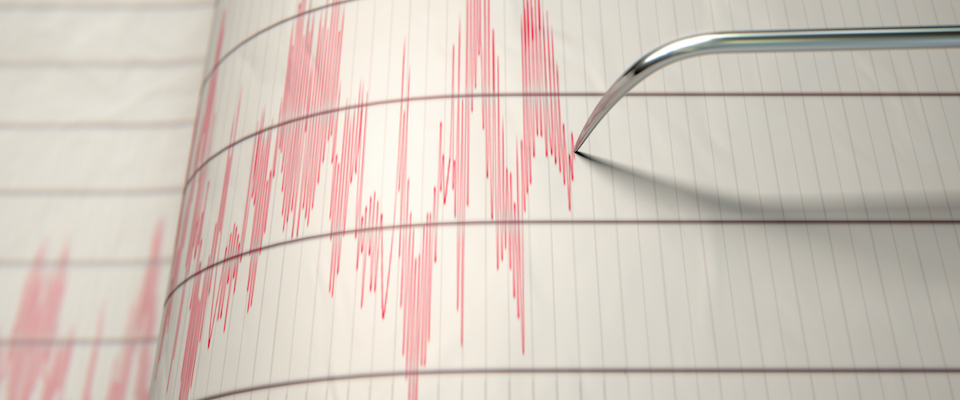The West Coast has moved a step closer to a functional earthquake early warning system with MyShake—a phone app that’s now ready for download on Android phones and headed for Apple phones as well.
It’s designed to detect motion particular to an advancing earthquake, even if carried in a pocket or purse, and to send data back to scientists when an earthquake of 5.0 or greater strikes. Such data is designed to enable eventual creation of a network that can provide potentially life-saving seconds of warning to people when a seismic event is headed their way. The rollout of the app follows a recent White House announcement to expand technology developed by UC Berkeley, the California Institute of Technology, the University of Washington and the U.S. Geological Survey from a demonstration to a prototype system.
The full system—dubbed ShakeAlert—consists of three essential components, says Richard Allen, the director of the Berkeley Seismological Laboratory and the chairman of the university’s Department of Earth & Planetary Science. First are seismometers and geodetic sensors, which detect earth movement. These relay any terrestrial twitching and spasms to computers, where powerful algorithms digest the data and predict quake intensity for various areas. Based on these algorithmic conclusions, warnings are relayed to the public through a variety of media, including mobile phones, radio and television—or in some cases, directly to the computers controlling automated systems such as BART and building elevators.
“The sensors detect the very low amplitude energy waves (that typically precede large quakes), which are then analyzed by the very robust algorithms we’ve developed,” says Allen. “Then, of course, we have that crucial final stage, where you have to push the alert out to everyone as quickly as possible, using all available means.”
The entire process must be seamless, because the advantages provided by ShakeAlert are modest in terms of timescale: Citizens will get a heads-up only seconds to a couple of minutes before a major quake hits. But that, of course, can make all the difference. Say, for example, you’re working on the chassis of your shakily jacked-up ’55 Chevy, or admiring the halberd poised over your head in a museum of antique arms and armor. A 10-second a-ooogah from your smart phone could be a literal life saver. Further, trains could be automatically stopped before they enter dubious tunnels or cross shaky bridges, and elevators could be halted before cables snap and carriages plunge. And a one-or two-minute warning? Schools and seismically deficient office buildings could be evacuated. Brain surgeries could be safely halted. Jetliners about to land at vulnerable runways could be diverted to other airports.
Further, there is nothing experimental about ShakeAlert, says Allen. A demo system has been in place since 2012. All the beta testing is completed, and the testers weren’t just nerds logging on in their basements; BART was among the initial users. The system, in short, is ready to move to a prototype model, which involves installing many more sensors in more locations, and thus expanding the number of participating people and institutions.
“It’s not just a matter of increasing the users and installing more hardware, though that’s certainly part of it,” says Allen. “But participants also have to figure out how to apply the information they could receive. Schools, for example, have to develop effective response plans.”
The White House also today unveiled a series of actions to better prepare the nation for coming quakes, including a presidential executive order requiring federal buildings to be designed and/or altered in accordance with earthquake resistant building standards. But much of the announcement focused on ShakeAlert—what the White House called a “next-generation production prototype will allow beta users to develop and deploy pilot implementations that take protective actions based on the USGS ShakeAlert warnings in areas with sufficient station coverage.” The Federal Communication Commission also is proposing rules to streamline targeted alerts and to “ensure that alerts will be consistent across different technology platforms, including those that use the internet.”
The move from a demo to a prototype system ultimately points to a fully implemented network in the not-too-terribly-distant future covering California, Oregon and Washington. On Twitter, the Pacific Northwest Seismic Network responded to a question about when the system will be available, saying “Hopefully within this year or so.”
At this point, it’s not about the tech; it’s about the money. “It’s proven technology, we know people want it, so now we have to push forward and get it out there,” says Allen. “It’s not as though we’re the first to try this. Japan already has an automated and functional system.”
But Japan may have another thing that the U.S. doesn’t—a political system that isn’t so completely polarized and toxic that it fails to fund basic public safety programs. Which is one of the main reasons for the kumbaya atmosphere at the White House summit. The event was a not-so-subtle effort to gin up a little bipartisan support, to get something funded that could save the lives of Democrats and Republicans alike.
And miraculously, partisans from both sides of the aisle seem generally well disposed to ShakeAlert, says Allen.
“Congress already has allocated a fair amount of money—$5 million in 2014 and $8.2 million in 2015,” Allen says. That supplemented a $6 million seed grant seed grant from the Gordon and Betty More Foundation. All told, he says, about half of what’s required to implement the prototype has been raised. “We need $38 million to finish building out the prototype system, and then $16.1 million a year to operate it.”
Of course, that all seems like chump change in an era where a workhorse jet fighter like the F/A-18 Hornet costs almost $120 million, and taxpayers shell out $6 billion a year in ethanol subsidies to corporate corn producers in the Midwest. But let’s face it: The Left—we mean West—West Coast has never been a favored beneficiary of Washington largesse.
Still, Allen remains optimistic Congress will come through, and he’s also shaking money trees in Silicon Valley.
“Google provided some initial funding a few years ago,” he says. “That has ended, but we’re talking to some other technology companies. We hope the (White House) summit will provide some impetus—show people why this is needed, and needed now.”





















